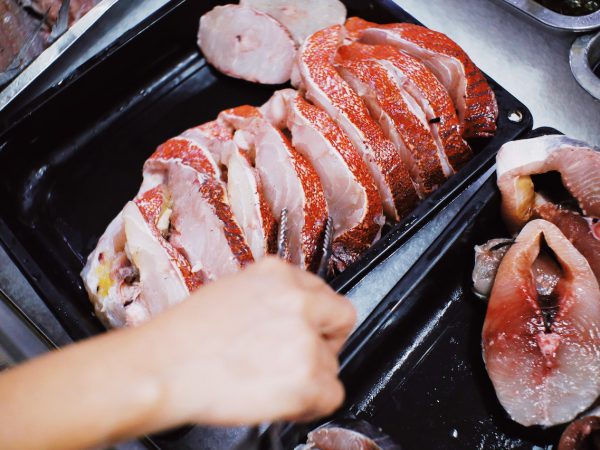
Explore the Cultural Richness of A Se Gya Tak
A Se Gya Tak: Unveiling the Cultural Tapestry
Introduction
Nestled in the heart of Southeast Asia lies a hidden gem of rich culture and vibrant traditions – A Se Gya Tak. This region, often overlooked by conventional travel guides, is a melting pot of diverse customs, languages, and beliefs that have been carefully preserved through generations. In this comprehensive guide, we will delve into the depths of A Se Gya Tak’s cultural richness, exploring its unique features that set it apart as a must-visit destination for cultural enthusiasts.
The History of A Se Gya Tak
A Se Gya Tak has a rich history that dates back centuries, with influences from various indigenous tribes, colonial powers, and neighboring countries. The region’s past is characterized by a blend of trade, conquests, and migrations, which have all contributed to shaping its unique cultural identity.
Cultural Traditions and Festivals
One of the most captivating aspects of A Se Gya Tak is its colorful array of cultural traditions and festivals. From dazzling dance performances to intricate handicrafts, every aspect of daily life in A Se Gya Tak is imbued with a deep sense of tradition and heritage. Among the most prominent festivals celebrated in the region are the Ngayaw Festival, which honors the harvest season, and the Dance of the Thousand Lanterns, a mesmerizing performance that symbolizes unity and prosperity.
Cuisine and Culinary Delights
No cultural exploration of A Se Gya Tak would be complete without diving into its exquisite culinary offerings. The region’s cuisine is a tantalizing mix of flavors and textures, with each dish telling a story of its origins and influences. From spicy curries to fragrant noodle soups, A Se Gya Tak’s culinary landscape is a true feast for the senses.
Arts and Crafts
Artisans in A Se Gya Tak are renowned for their exquisite craftsmanship, producing a wide range of traditional arts and crafts that reflect the region’s cultural diversity. Intricately woven fabrics, delicate pottery, and vibrant paintings are just a few examples of the artistic treasures that can be found in A Se Gya Tak’s bustling markets and artisan villages.
Language and Literature
The linguistic landscape of A Se Gya Tak is as diverse as its cultural tapestry, with a multitude of languages spoken across the region. Each language has its own unique nuances and expressions, reflecting the rich history and heritage of the communities that inhabit A Se Gya Tak. Literature also plays a significant role in A Se Gya Tak’s cultural scene, with folk tales, epic poems, and modern novels all contributing to the region’s literary legacy.
Religious Beliefs and Practices
A Se Gya Tak is home to a wide range of religious beliefs and practices, with Buddhism, Animism, and Christianity being among the most prominent. These diverse religious traditions coexist harmoniously in the region, each contributing to the spiritual tapestry of A Se Gya Tak. Temples, shrines, and sacred sites are scattered throughout the landscape, offering visitors a glimpse into the region’s deeply rooted spiritual heritage.
Preservation and Modernization
In the face of rapid modernization and globalization, A Se Gya Tak is faced with the challenge of preserving its cultural heritage while embracing the opportunities of the 21st century. Efforts to safeguard traditional practices, languages, and craftsmanship are underway, ensuring that future generations will continue to benefit from the richness of A Se Gya Tak’s cultural legacy.
Conclusion
A Se Gya Tak stands out as a beacon of cultural diversity and heritage in a rapidly changing world. Its vibrant traditions, rich history, and warm hospitality make it a truly unique destination for travelers seeking to immerse themselves in the beauty of Southeast Asian culture. By exploring the cultural richness of A Se Gya Tak, we not only gain a deeper appreciation for the region’s unique identity but also contribute to the preservation of its invaluable heritage for generations to come.
Frequently Asked Questions (FAQs)
- What is the best time of year to visit A Se Gya Tak for cultural festivals and events?
-
The best time to visit A Se Gya Tak for cultural festivals is during the dry season, typically between November and March, when many celebrations take place.
-
Are there any specific cultural etiquettes or customs to be aware of when visiting A Se Gya Tak?
-
Respect for elders, modest attire when visiting religious sites, and removing shoes before entering homes are some common cultural etiquettes to observe in A Se Gya Tak.
-
What are some must-try dishes in A Se Gya Tak for food enthusiasts?
-
Some must-try dishes in A Se Gya Tak include Lap Meh, a spicy minced meat salad, Mi Qua, a flavorful noodle soup, and Nam Prik, a spicy chili paste served with vegetables.
-
How can visitors support the preservation of A Se Gya Tak’s cultural heritage during their stay?
-
Visitors can support the preservation of A Se Gya Tak’s cultural heritage by purchasing locally made crafts, participating in cultural workshops, and respecting traditional practices and beliefs.
-
Are there any guided tours or cultural programs available for visitors interested in learning more about A Se Gya Tak’s heritage?
- Yes, there are guided tours and cultural programs available in A Se Gya Tak that offer visitors the opportunity to explore local traditions, interact with artisans, and gain a deeper understanding of the region’s cultural richness.
By engaging with the cultural richness of A Se Gya Tak and immersing oneself in its traditions, visitors can not only create unforgettable memories but also contribute to the preservation of this extraordinary cultural tapestry for future generations to appreciate and enjoy.



